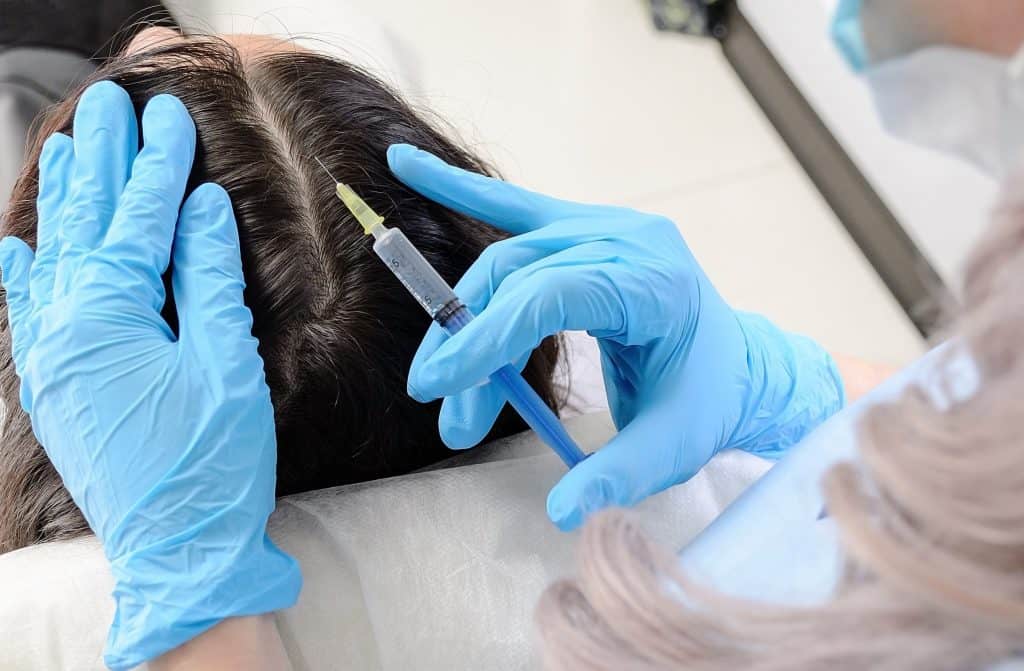PRP Injection: Best Solution to make your skin glow

The PRP (Platelet-Rich Plasma) technique utilizes the reconstructive and regenerative substances needed for our skin to flourish and for the healing process to be faster. PRP is used to help the body heal itself after various surgeries and has now become widely used in the field of cosmetic surgery. Not only does it work on scars, wounds, cracked or damaged skin, but it also helps in the regrowth of hair.
For this reason, PRP now also plays a big role in hair loss treatments. Once the transplant is completed, PRP is used in the areas that need regeneration and stimulation the most. PRP is used to help the the healing process of the affected areas, to stimulate growth in those areas, and to revitalize weakened hair.
How does PRP work?
Platelets are blood cells with several roles to play in the body.
One is to promote blood clotting so that a person does not excessively bleed when they are cut.
Another is to contain proteins in the blood that help wounds to heal.
Researchers theorize that by injecting areas of inflammation or tissue damage with high concentrations of platelets, it can encourage wounds to heal.
A small blood sample is taken from the person being treated and put into a centrifuge or other specialized device that spins at high speed. This process separates platelets from other blood components. The concentration of platelets is then injected into the area of the person’s body that needs to be treated.
Because the injection contains a high concentration of platelets, which can be from 5 to 10 times more than the untreated blood, doctors theorize that the platelets will speed up the healing
Benefits of PRP
Some examples of treatment areas where PRP has been used include:
Hair growth
Doctors have injected PRP into the scalp, as a way of reducing the inflammation that can lead to hair loss.
Tissue healing
Doctors first used PRP to help people heal after jaw and plastic surgeries. Examples of tissues that PRP has been used on include:
- tendons
- ligaments
- muscles
Ligaments can take time and be difficult to heal, which can make PRP an attractive option for some of those who have experienced injuries to this tissue group.
Inflammation reduction
Doctors have used PRP to reduce inflammation caused by osteoarthritis. This inflammation can lead to joints becoming painful and stiff.
Preparation for PRP Injections
Generally speaking, there are few steps to preparing for PRP injections.
However, PRP can be injected in different ways. For example, sometimes a topical numbing lidocaine solution is applied to your scalp before injection. You may have to arrive early for a treatment session for this to be applied.
Other times, a local anesthetic is mixed with the PRP to reduce any discomfort. Sometimes, your doctor will inject or apply PRP during surgery. In this instance, preparation for PRP injections would involve following your surgeon’s recommendations pre-surgery.
PRP injection Procedure
A tube (10 ml) of blood is taken from the patient and is then processed for about 15/20
minutes to separate the platelets and growth factors from other components in the
blood.
Here’s the typical PRP injection process:
- A healthcare professional will draw a sample of your blood. The amount of the sample depends on where the PRP will be injected. For example, the amount of blood taken for injection into the scalp for one study trusted Source was 20 milliliters. This is slightly larger than one teaspoon.
- The blood is placed into a centrifuge. This is a machine that spins around very quickly, causing the blood components to separate. The separation process takes about 15 minutes.
- A technologist takes the separated plasma and prepares it for injection into the affected area.
- Doctors will often use imaging, such as ultrasound, to pinpoint specific areas for injection, such as the tendon. Your doctor will then inject the PRP into the affected area.
Potential Side Effects of PRP
Because PRP involves injecting a substance into the skin, there are potential side effects. PRP is autologous, which means it contains substances that come directly from your own body. This reduces the risks for an allergic reaction that can occur from injecting other medications, such as cortisone or hyaluronic acid. However, there are risks from the injection itself, including:
- infection
- nerve injuries
- pain at the injection site
- tissue damage
You should discuss these potential risks with your doctor, as well as the steps your doctor will take to minimize these risks.
Recovery Time for PRP Injections
When PRP is injected following injury, your doctor may recommend that you rest the affected area. However, these recommendations are more related to the injury and less to the PRP injections. Most people can continue their daily activities following PRP injections.
The patient should avoid washing the treatment area for 48 hours. After that, it is all right to use hair and skincare products and continue with topical medications.
Because PRP injections are intended to promote healing or growth, you may not notice an immediate difference after receiving the injections. However, in several weeks or months, you may observe that the area is healing faster or growing more hair than you would have expected if you hadn’t received PRP injections.
The treatment area may be sore for two or three days, and the patient may notice some bruising. Acetaminophen can help ease discomfort. In case of severe pain, the patient should notify the doctor’s office right away.
Hair dye or coloring treatments can resume one week after PRP treatment.

